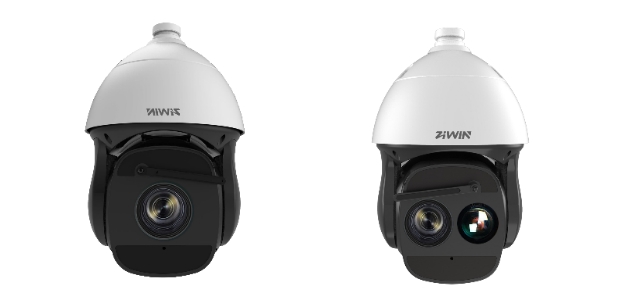
In the Middle East’s harsh conditions—50°C+ temperatures, sandstorms, and intense UV exposure—standard PTZ cameras typically fail within 3-6 months, suffering from:
Motor overheating and seizing
Lens scratching from sand abrasion
Discolored and brittle casings
Industrial-grade dustproof and explosion-proof PTZ cameras (Explosion-Proof PTZ Cameras) are the top choice for oil facilities, desert highways, and open-pit mines, thanks to:
Military-grade cooling systems
IP68 sealing
ATEX explosion-proof certification
This guide reveals:
5 golden rules for selecting heat-resistant PTZ cameras
Key dustproof & explosion-proof technologies
Installation tips for Saudi Arabia, UAE, and more
1. Extreme Heat: Accelerated Component Failure
· At 65°C+, ordinary cameras lose 70% of their lifespan (UAE field test data)
· Motor grease dries up, causing rotation failure
2. Sandstorms: The Silent Killer
· Fine sand jams gears, causing 3° monthly positioning drift
· Lens coatings wear out, reducing night vision efficiency by 40%
3. UV + Salt Corrosion: The Hidden Destroyer
· Plastic casings crack within 18 months (Qatar coastal case study)
· Metal corrosion weakens explosion-proof integrity
Standard 1: Certifications Matter More Than Specs
· Must pass IEC 60068-2-1 high-temperature testing(-40°C to +80°C cycles)
· Avoid fake claims: Models labeled "heat-resistant" without certification codes
Standard 2: Active Cooling Systems
· Dual turbo fans + heat sinks (better than passive aluminum cooling)
· Compressor cooling in oilfield models (operates continuously at 60°C)
Standard 3: True IP68 Dust & Waterproofing
· 6K dustproof: 8-hour sand immersion test
· 8K waterproof: Resists high-pressure steam cleaning (unlike IP66)
Standard 4: Explosion-Proof Certification Is Non-Negotiable
· ATEX/IECEx Zone 1 certification: Mandatory for oil & gas sites
· Decoding labels: What "Ex d IIB T6 Gb" really means
Standard 5: UV-Resistant Materials
· ASA engineering plastic vs. ordinary ABS in UV aging tests
· 316L stainless steel brackets with salt spray test reports
1. Sand Defense System
· Labyrinth sealing: Blocks sand mechanically (patent diagram)
· Magnetic dust filters: Removable for cleaning (Dubai Airport solution)
2. Heat Stabilization Tech
· Shin-Etsu thermal gel protects critical circuits
· Smart temperature control:
Below 50°C: Fans run at low speed
Above 60°C: Auto-reduces resolution to preserve function
3. Explosion-Proof Core Design
· Flameproof enclosure: Contains sparks in 0.5mm alloy chamber
· Intrinsically safe circuits: Limits energy to <30μJ
4 Installation Mistakes to Avoid
Mounting on metal rooftops (surface temps hit 90°C)
Using standard PVC conduits (brittle in 3 months—Saudi case)
Ignoring monsoon wind direction (doubles sand buildup)
Pro Installation Steps
1. Pre-cooling: Refrigerate cables 24 hours before installation (prevents expansion)
2. Weatherproof wiring:
XLPE high-temp cables
Gold-plated connectors + silicone seals
3. Angle calibration:
Avoid direct midday sun on lenses
Tilt 20° upward to prevent sand accumulation
Quarterly Maintenance Checklist
· Sand removal: Clean gears with nitrogen air guns (no water!)
· Lubrication: Use full-synthetic high-temp grease (-40°C to 180°C)
· Inspection:
Check explosion-proof gaps (use feeler gauges)
Test auto-repositioning accuracy (>0.5° error needs recalibration)
Q: Our PTZ cameras in Kuwait keep rebooting in summer. Fix?
A: Install sunshades + cooling bases, or upgrade to compressor-cooled models
Q: Which certification is better for the Middle East—ATEX or IECEx?
A: IECEx is preferred in UAE/Saudi, while ATEX suits European projects
Q: How to fix blurry footage after sandstorms?
A: Use a lens cleaning pen—never alcohol on coated lenses!
Choosing Middle East-optimized PTZ cameras ensures:
✔ 5+ years of trouble-free operation
✔ 95% recognition rate during sandstorms
✔ Compliance with Saudi Aramco SHELL standards
Get a Free Customized Solution! Our engineers will design an optimized surveillance plan.